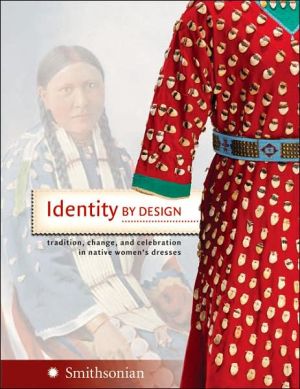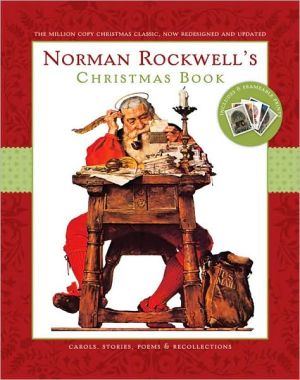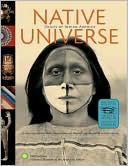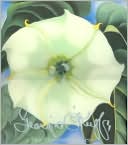Identity by Design: Tradition, Change, and Celebration in Native Women's Dresses
This beautiful book presents a fascinating array of complete women's and girls' outfits dating from the 1830s to the present, including dresses, shawls, shoes, belts, bags, fans, and hair accessories. Also included is historical and contemporary background information on Native life and Native women and their dress. To accompany a major exhibit of the same name at the NMAI in March 2007.
Search in google:
This beautiful book presents a fascinating array of complete women's and girls' outfits dating from the 1830s to the present, including dresses, shawls, shoes, belts, bags, fans, and hair accessories. Also included is historical and contemporary background information on Native life and Native women and their dress. To accompany a major exhibit of the same name at the NMAI in March 2007.
Identity by Design\ Tradition, Change, and Celebration in Native Women's Dresses \ \ By Ian National Museum of the American Indian \ HarperCollins Publishers, Inc.\ Copyright © 2007 Ian National Museum of the American Indian\ All right reserved.\ ISBN: 9780061153693 \ \ \ Chapter One\ Portraits of Native Women and Their Dresses\ Sitting in the audience at the Tribal Fusions fashion show sponsored by the Institute of American Indian Arts during the annual Indian Art Market in Santa Fe, New Mexico, in 2005, I listened as noted Kiowa author N. Scott Momaday read from his book The Way to Rainy Mountain during the opening of the event:\ \ East of my grandmother's house, south of the pecan grove, there is buried a woman in a beautiful dress. Mammedaty [Momaday's grandfather] used to know where she is buried, but now no one knows. If you stand on the front porch of the house and look eastward toward Carnegie, you know that the woman is buried somewhere within the range of your vision. But her grave is unmarked. She was buried in a cabinet, and she wore a beautiful dress. How beautiful it was! It was one of those fine buckskin dresses, and it was decorated with elk's teeth and beadwork. That dress is still there, under the ground. 1\ \ As I reflected on the powerful image of the woman and her dress evoked by Momaday, I couldn't help but think of the stories my grandmothers told me about the dresses they once owned. Both women were from the OglalaLakota Nation (one of the seven branches of the Teton subdivision of the Sioux) from South Dakota. They lived far to the north of Carnegie, Oklahoma, and their dress styles were quite different from those described by Momaday--yet no less beautiful.\ "Why did mama let me sell my dress? I was crazy!" my maternal grandmother, Grace Pourier, recalled regretfully. "They said there was a woman down at the agency buying beadwork, and I asked mama if I could sell my dress, and she said 'Okay.'"\ Born in 1909, my grandmother was the daughter of Emil and Emma (Lee) Pourier and granddaughter of Baptiste and Josephine (Richards) Pourier. The Indian agency where she parted with her cherished dress--made for her, the oldest grandchild, by "Grandma Pourier"--was located on the Oglala Lakota reservation at Pine Ridge, South Dakota. The only remaining evidence of the dress is a family photo of my grandmother, as a child, wearing the wonderful garment (see p. 16).\ The dress had a fully beaded yoke (the piece of the dress that is fitted around the neck and shoulders) and was made of tanned hide (also called buckskin). This style of dress was the height of fashion among the Lakota after 1870, during the time that Native people began to be confined to reservations and reserves in both the United States and Canada. "My dress was beaded with cut glass beads!" my grandmother would exclaim. Faceted glass beads known as cut beads were introduced in the early 1900s. When light hits these beads in a certain way, they appear to sparkle--a characteristic that makes cut beads popular to this day.My grandmother wore a pair of fully beaded leggings and moccasins with the dress, and she explained, "The soles of the moccasins were fully beaded." Some people believe that moccasins of this type are burial moccasins. Annabelle One Star, a relative of my grandmother and a renowned Oglala beadworker who married into a Sicangu family on South Dakota's Rosebud Reservation, explained that she also had a pair of moccasins with beaded soles made for her as a young girl. ("They were difficult to walk in, especially on a hardwood floor," she remembered.) Annabelle, like my grandmother, lived a good, long life, which would certainly challenge the belief that moccasins with fully beaded soles were burial moccasins.\ "I fought them for my dress." The voice of my paternal grandmother, Emily Her Many Horses, was full of emotion as she told me the story of how she had been forced to part with her dress, which had been made of wool and decorated with elk teeth. The elk teeth that adorned such a dress are still highly prized, as they are the eyeteeth (only two per elk) and are a natural ivory. At my grandmother's naming ceremony--an occasion at which it is traditional for the family of the person being named to give away gifts--her parents, Susie (Blunt Horn) and Louis Mathews, made her change out of her dress and give it away. "I wondered why my grandpa had my shoes tied to his saddle," my grandmother remembered. After they wrestled the dress off my grandmother and gave it away, my great-great-grandfather John Blunt Horn gave away five horses in her honor that day.\ My grandmothers' dresses are probably still out in the world somewhere, perhaps part of a museum collection or treasured as another family's heirloom, but memories of these women and their dresses remain with me--how one grandmother regretted having sold her dress, and the other lamented not fighting hard enough to save hers. Such dresses were created with love by grandmothers, worn for special occasions such as a ceremony or a dance, and sometimes saved so one could be buried in her finest. They reflect the creativity of dressmakers who followed styles developed and passed down by past generations of Native artists. With the introduction of new trade materials, dress styles evolved, but remained within specific tribal styles created by societies dedicated to quillwork and, later, beadwork.\ Identity by Design\ Identity by Design: Tradition, Change, and Celebration in Native Women's Dresses draws upon the National Museum of the American Indian's renowned collection of dresses from the Plains, Plateau, and Great Basin regions of the United States and Canada to explore the last 200 years of Native women's clothing and design. The dresses--along with the words, insights, and memories of contemporary women artists who design and make dresses--reveal that Native women's clothing, then and now, reflects tribal and family traditions and individual artistic skill and expression.\ In December 2005, the National Museum of the American Indian (NMAI) invited six Native women artists from the Plains, Plateau, and Great Basin to view . . .\ \ \ Continues... \ \ \ \ Excerpted from Identity by Design by Ian National Museum of the American Indian Copyright © 2007 by Ian National Museum of the American Indian. Excerpted by permission.\ All rights reserved. No part of this excerpt may be reproduced or reprinted without permission in writing from the publisher.\ Excerpts are provided by Dial-A-Book Inc. solely for the personal use of visitors to this web site. \ \








